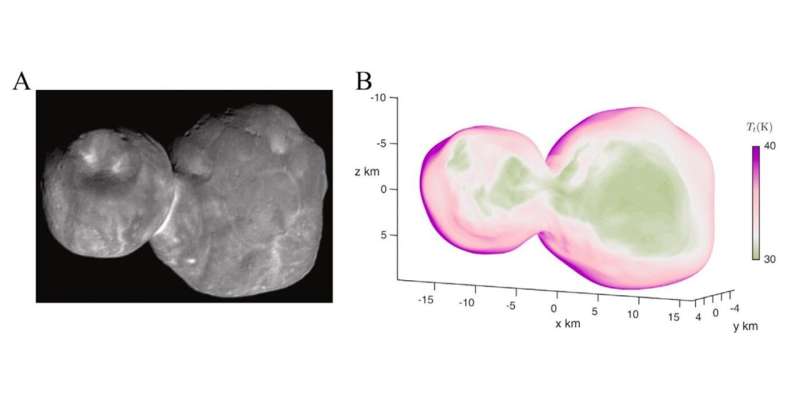In the vast expanse of our solar system, beyond the familiar orbits of planets and moons, lies a realm shrouded in mystery—the Kuiper Belt. Within this distant region, remnants from the dawn of our solar system, known as Kuiper Belt Objects KBOs, offer tantalizing clues about the origins and evolution of our cosmic neighbourhood. Among these enigmatic objects, 486958 Arrokoth stands out as a celestial time capsule, preserving ancient secrets within its icy depths.
A recent paper published in Icarus, co-authored by Dr. Samuel Birch of Brown University and Dr. Orkan Umurhan, a senior research scientist at the SETI Institute, unveils groundbreaking findings about Arrokoth, shedding new light on the preservation of volatile substances in these distant celestial bodies. Titled “Retention of CO Ice and Gas Within 486958 Arrokoth,” the study challenges conventional wisdom and proposes a paradigm shift in our understanding of KBO evolution.
Arrokoth’s unique characteristics make it an ideal case study for investigating the fate of volatile substances like carbon monoxide CO in these cold, distant objects. By analyzing data from spacecraft missions and employing innovative modeling techniques, the researchers discovered that Arrokoth—and potentially many other KBOs—may still retain their original volatile ices, contrary to previous assumptions.
One key insight from the study is the role of subsurface atmospheres in preserving volatile ices within KBOs. Unlike traditional models that underestimated the longevity of volatile substances, the new research offers a simpler yet effective approach, likening the process to gas escaping through porous rock. This mechanism suggests that KBOs like Arrokoth can maintain their volatile ices for billions of years, challenging previous notions about their evolutionary trajectory.
Dr. Umurhan emphasizes the significance of correcting a longstanding error in the physical models used to study these ancient objects. The study not only offers a deeper understanding of KBO evolution but also has implications for re-evaluating our theories of comet interior evolution and activity.
The implications of these findings extend beyond the realm of theoretical research, opening up new avenues for understanding the nature of comets and their origins. The presence of volatile ices in KBOs supports the intriguing hypothesis of these objects as “ice bombs,” capable of displaying cometary behavior when their orbits bring them closer to the sun.
The study has practical implications for future space exploration endeavors. As co-investigators on the upcoming CAESAR mission proposal, Dr. Birch and Dr. Umurhan are at the forefront of efforts to unravel the mysteries of cometary bodies. Their research underscores the enduring mysteries of our solar system, reminding us of the boundless potential for discovery that awaits us in the depths of space.
The study of ancient ice in distant celestial bodies offers a glimpse into the cosmic history of our solar system. Through meticulous research and innovative modeling techniques, scientists are uncovering the hidden secrets of KBOs like Arrokoth, reshaping our understanding of planetary formation and evolution. As we continue to explore the depths of space, each discovery brings us closer to unlocking the mysteries of our celestial origins.
